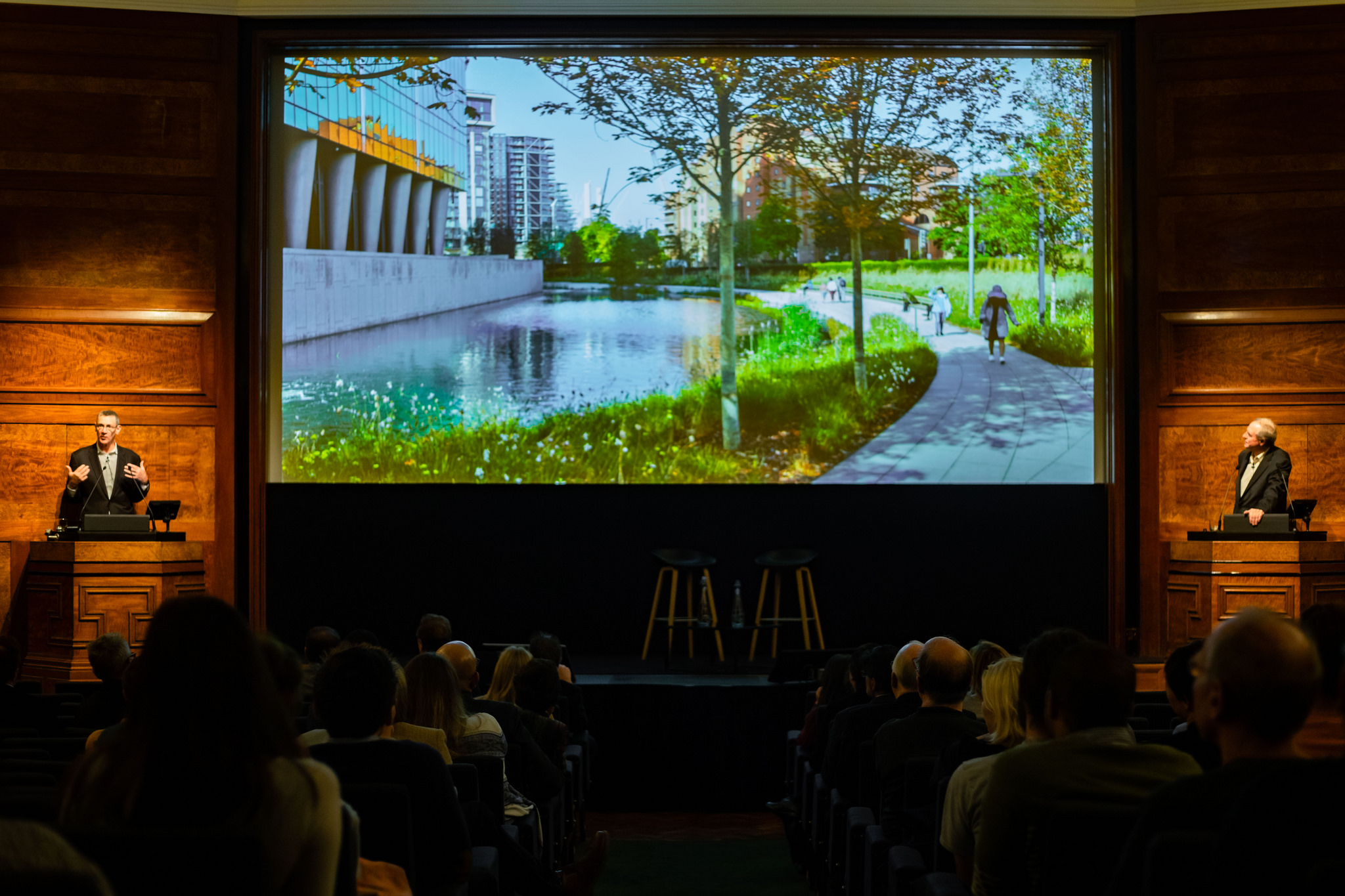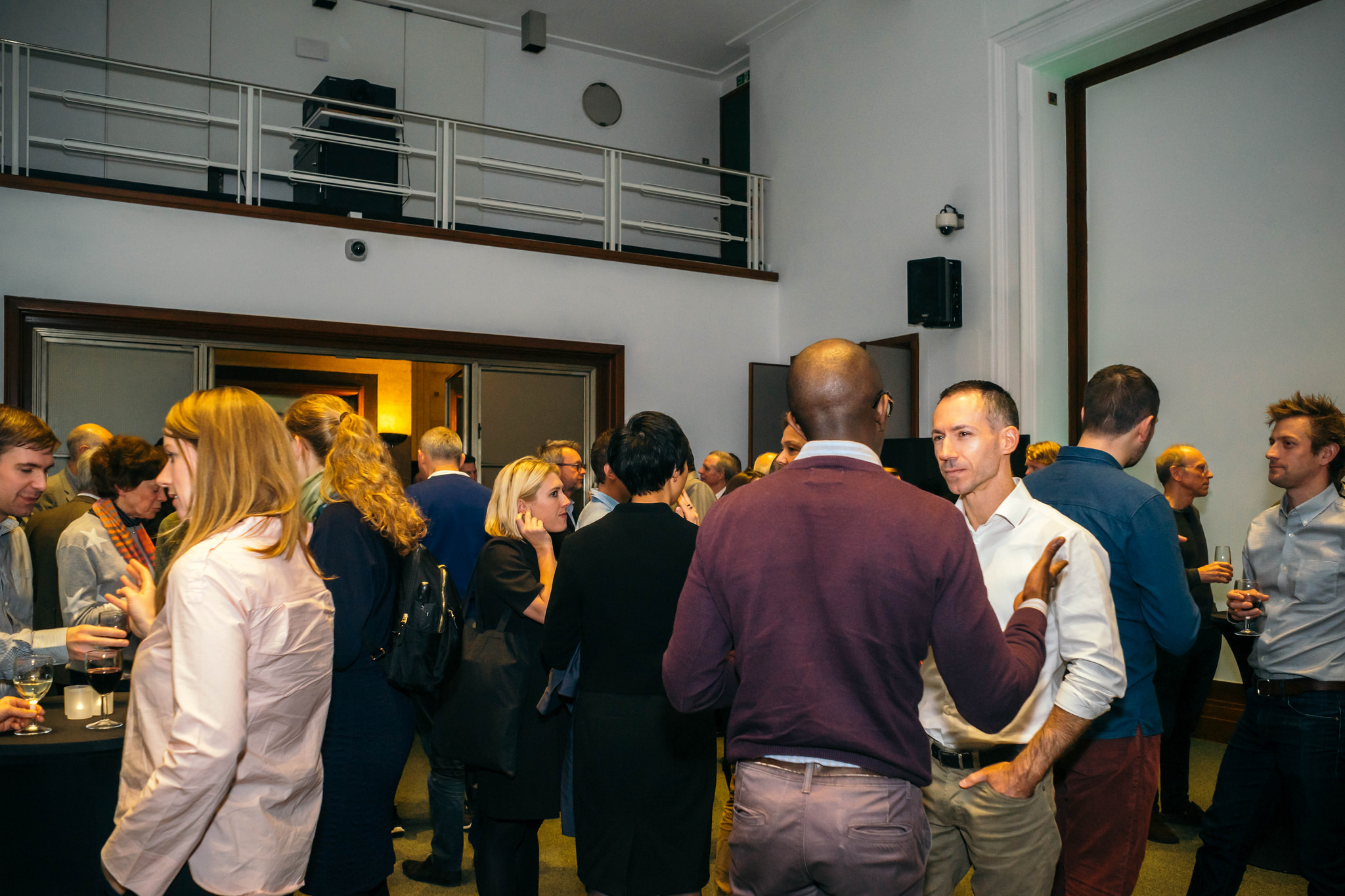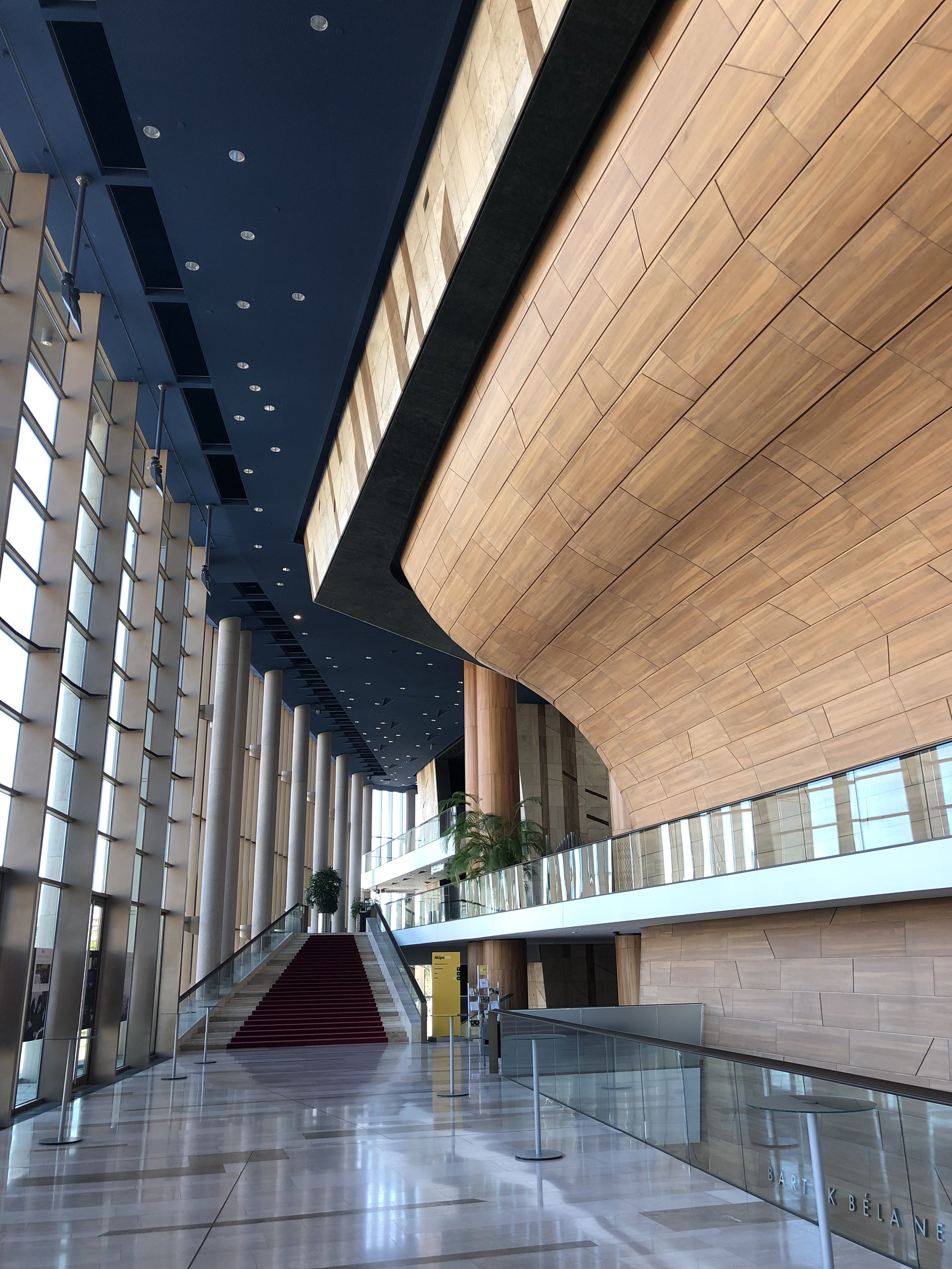AIA RIBA Keynote Lecture 2018
Fiona Mckay
The 2018 AIA UK / RIBA Keynote Lecture featured James Timberlake and Stephen Kieran, founding partners of American firm, Kieran Timberlake, and designers of the recently completed US Embassy in London.
Held on Monday, 29th October at the RIBA headquarters on Portland Place, the event was kicked off with welcoming addresses by AIA UK President Alex Miller, RIBA International Vice-President Chris Williamson, and Honorary FAIA member Chris Wilkinson.
The speaking duo tracked themes of transparency and juxtaposition, as well as an interest in sustainable architecture and technological innovation, across four projects, SmartWrapTM, Cellophane HouseTM, the Edgar N. Putnam Event Pavilion and Dilworth Park, leading to the design of the US Embassy. Kieran and Timberlake spoke eloquently of the conceptual ambitions of the scheme, to embody ideals of transparency and openness, while balancing the strict security requirements of an embassy and the firm’s quest for pushing the boundaries of building technology.
This year’s lecture was organized by AIA UK Director and AIA International Region Vice President Lester Korzilius and AIA UK Director Ben Lee. The lecture was sponsored in part by Trosifol and Merck. Please consider them for your next project.
Many thanks to James Timberlake and Stephen Kieran for coming to London to share the stories behind their projects, and to the team at RIBA without whose hard work this event would not have been possible.
Written by: Amrita Raja, AIA
Image Credits: Barima Owusu Nyantekyi (www.barima.co)
Please click here to see more photos of the event.
























